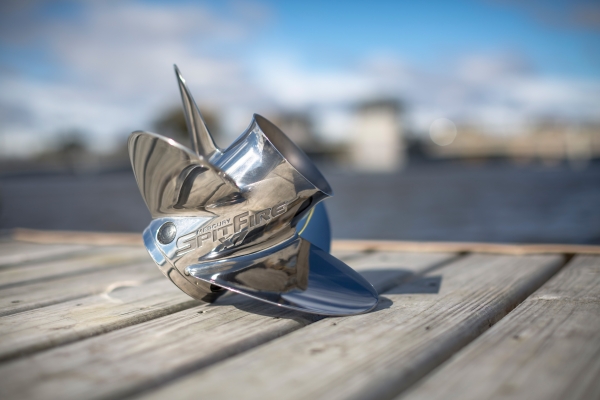When you figure out where your performance issues lie, your going to want to look at what RPM's you are running at WOT (wide open throttle). This is going to tell you which way you should go as far as going up or down in pitch. Most larger sized motors at WOT typically turn around 5000-6000 RPM's. Sticking in this sweet spot will give you the best performance out of your motor. Running too high or too low than the recommended RPM range can result in you damaging your engine. Whenever we install a new or used outboard on a boat, we also take them to the water for testing. One of the major things we are looking at is the RPM range. We intially take a guess as far as what pitch propeller we should use but we also bring a few others with us so we can either go up or down in pitch if we have to. When we test we try to get as close to the max as we can so that when they load their boat down with their usual payload, they will still be in that sweet spot.
Let's say you are under the recommended RPM range. Which way should you go? If you want to go up in RPM, you have to go down in pitch and if you want to go down in RPM you will have to go up in pitch. So when you are changing the pitch, you also have to remember that each inch of pitch will change the RPM's by about 200 or so. Let's say you are running at 5000 RPM's on a 19 pitch prop, and need to go up with your RPM. If you go down to a 17 pitch you will be right around the 5400 RPM mark.
Stainless steel propellers are another option for gaining performance. Stainless steel offers better performance because they do not flex or yield like an aluminum prop will. Yielding is when an aluminum propeller will flex during acceleration and once the boat is up to speed, it returns to its intended pitch. You don't have this problem as much with stainless because it is a stronger material. Although there are cases when flexing can be a good thing. When an aluminum prop is flexed during acceleration, it is reducing the pitch, therefore providing a better pitch for acceleration. The only problem would be if the prop does not return to its actual pitch once caught up to speed.
Another option you can try would be going to a four blade propeller. A four-blade propeller can help with acceleration and efficiency, but will sacrifice your top speed due to the additional drag from the extra blade.
Just remember that when you are trying to gain performance in one area (acceleration), you can possibly expect to lose it somewhere else (top end speed). It just comes down to how you use your boat and what kind of performance is most important to you. Also, boats tend to get heavier due to the added gear and accessories throughout the years. The propeller pitch that worked great when you first got the boat might not be what you need currently.


